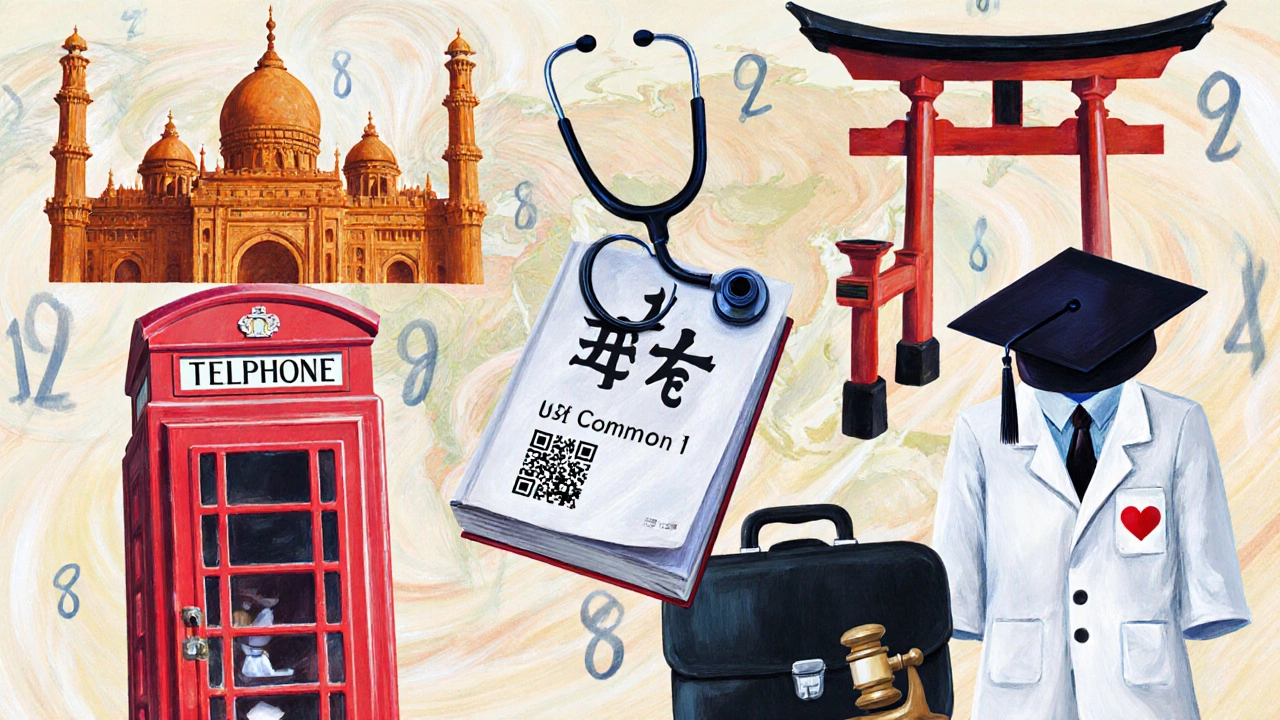When you hear the phrase most competitive exam, you probably picture thousands of hopeful candidates battling for a handful of seats. But what truly makes an exam competitive? Is it the sheer number of applicants, a razor‑thin acceptance rate, or the depth of knowledge required? This guide breaks down the factors that drive competitiveness, ranks the toughest exams on the planet, and hands you practical prep strategies so you can tackle the challenge head‑on.
What Defines a Competitive Exam?
A Competitive exam is a standardized assessment that selects a limited number of candidates from a large pool of applicants based on merit, often for high‑stakes academic, professional, or government positions.
Key parameters that boost competitiveness include:
- Applicant volume: More test‑takers increase the odds of missing the cut‑off.
- Acceptance rate: The ratio of seats to applicants; lower rates signal higher competition.
- Score threshold: Minimum marks needed to qualify for the next stage.
- Preparation intensity: Depth and breadth of syllabus, often requiring years of study.
These metrics intersect differently across regions, so a “hard” exam in one country might be less competitive elsewhere.
Top 8 Most Competitive Exams in 2025
Below is a snapshot of eight exams that consistently rank at the top in terms of applicant volume and acceptance rate.
| Exam | Annual Applicants | Seats Available | Acceptance Rate | Typical Minimum Score |
|---|---|---|---|---|
| Indian Administrative Service (IAS) Exam | 1,200,000 | 530 | 0.04% | 210/240 (Preliminary) |
| United States Medical College Admission Test (MCAT) | 85,000 | 12,000 (med school seats) | 14% | 512 (out of 528) |
| UK Civil Service Fast Stream | 30,000 | 560 | 1.9% | 85% overall assessment |
| Japan Common Test for University Admissions | 1,150,000 | Variable (depends on universities) | ≈2% | 80% of max score |
| Graduate Record Examination (GRE) | 550,000 | Varies by graduate program | ~6% for top programs | 320/340 (Quant) |
| Graduate Management Admission Test (GMAT) | 200,000 | Varies by MBA program | ~7% for elite schools | 730/800 |
| USMLE Step 1 | 100,000 | All pass, but >90% needed for residencies | Not applicable | ≥240 (out of 300) |
| Law National Aptitude Test (LNAT) | 20,000 | ≈1,500 (law school places) | 7.5% | ≥20/42 |
Notice the stark contrast: the IAS exam’s acceptance rate is a mere 0.04%, while the USMLE Step 1 isn’t about acceptance at all but about scoring high enough to secure a residency.
Why These Exams Are So Tough
Let’s unpack the driving forces behind each of the eight exams.
- Indian Administrative Service (IAS) Exam: Known as the “Supreme Service” in India, it combines three stages - Preliminary, Mains, and Interview. The syllabus spans history, geography, economics, ethics, and optional subjects, demanding a multi‑year study plan.
- Medical College Admission Test (MCAT): Tests knowledge across biology, chemistry, physics, psychology, and critical analysis. Medical schools allocate a fixed number of seats, making the competition fierce.
- UK Civil Service Fast Stream: Requires a blend of leadership potential, analytical skills, and situational judgment. The assessment centre includes group exercises and a final interview.
- Japan Common Test for University Admissions: Replaces the older National Center Test and assesses Japanese, mathematics, English, and science. Elite universities like the University of Tokyo set very high cut‑offs.
- Graduate Record Examination (GRE): Primarily used for graduate programs in the US and Canada. High quantitative scores are essential for STEM fields, while verbal scores matter for humanities.
- Graduate Management Admission Test (GMAT): Business schools evaluate analytical writing, integrated reasoning, quantitative, and verbal skills. Top‑tier MBA programs only accept scores above 730.
- USMLE Step 1: While everyone passes, residencies in specialties such as dermatology or orthopedic surgery require scores in the 95th percentile.
- Law National Aptitude Test (LNAT): Tests reading comprehension and logical reasoning for UK law schools. High scores are mandatory for prestigious institutions like Oxford and Cambridge.
Each exam’s competitiveness stems from a mix of massive applicant pools and razor‑thin seat availability, amplified by the career impact of a successful result.

How to Choose the Right Exam for Your Goals
Before you dive into a grueling prep schedule, ask yourself these three questions:
- What career path am I targeting? (e.g., civil service, medicine, law, business)
- Do I meet the basic eligibility criteria (age, educational background)?
- How much time and resources can I realistically allocate for preparation?
Mapping your answers to the exam list helps you avoid unnecessary effort. For example, if you aim for a high‑paying corporate role, the GMAT or GRE will be more relevant than the LNAT.
Effective Preparation Strategies for High‑Stakes Exams
Regardless of the exam you pick, certain study habits consistently boost performance.
- Start Early & Set Milestones: Break the syllabus into monthly, weekly, and daily goals. For the IAS, allocate 6‑12 months for the prelims alone.
- Use Official Materials: Primary sources (e.g., UPSC’s syllabus, AAMC’s MCAT practice tests) reflect the real exam’s style and difficulty.
- Practice Under Timed Conditions: Simulate the exam environment at least once a week. This builds stamina and time‑management skills.
- Analyze Weak Areas: After each mock, review errors and adjust your study plan. Tools like Anki flashcards help reinforce problem areas.
- Join Study Communities: Forums like Pagalguy for IAS or StudentDoctor.net for USMLE provide peer support and resource sharing.
- Focus on Health: Regular sleep, balanced meals, and short breaks prevent burnout - a common pitfall for marathon prep.
- Seek Expert Coaching When Needed: If self‑study stalls, a reputable coach can provide structured guidance and personalized feedback.
Tailor these tactics to your exam’s specific format. For instance, the LNAT values critical reading, so daily newspaper analysis is more beneficial than endless quantitative drills.

Common Pitfalls and How to Avoid Them
Even diligent candidates slip into traps that waste time and lower scores. Keep an eye out for these:
- Over‑reliance on One Resource: Relying solely on one textbook or coaching material can leave blind spots.
- Neglecting Revision: Without spaced repetition, early‑learned concepts fade quickly.
- Ignoring Exam‑Day Logistics: Forgetting to check venue, required IDs, or test‑day rules can cause unnecessary stress.
- Under‑estimating the Interview Phase: Exams like the IAS and Fast Stream have crucial interview components that require separate preparation.
Plan a mock interview session, keep a checklist for the exam day, and allocate at least 20% of your study time to review.
Frequently Asked Questions
What makes an exam “competitive” versus “difficult”?
A competitive exam has a large pool of applicants competing for a limited number of spots, resulting in a low acceptance rate. Difficulty refers to how challenging the content is, regardless of applicant numbers.
Which exam has the lowest acceptance rate in the world?
The Indian Administrative Service (IAS) exam tops the list, with roughly 0.04% of candidates advancing past the final interview.
Can I prep for the IAS exam while working full‑time?
It’s possible but requires disciplined time‑blocking-typically 3‑4 hours daily after work, plus weekends for full‑length mock tests.
How important is the interview for the UK Fast Stream?
The interview carries about 30% of the total score. Demonstrating leadership stories and problem‑solving ability is crucial.
What study resources are free for the MCAT?
The AAMC offers a free “MCAT Official Guide” PDF and a limited set of practice questions. Khan Academy’s biology and chemistry playlists are also widely used.
Next Steps: Building Your Roadmap
Pick the exam that aligns with your career vision, then create a 12‑month roadmap using the milestones below:
- Month 1‑2: Gather official syllabus, register for the exam, and set a realistic weekly study schedule.
- Month 3‑6: Complete core content study, using textbooks, video lectures, and practice questions.
- Month 7‑9: Begin full‑length mock exams under timed conditions; analyze results weekly.
- Month 10‑11: Focus on weak spots, refine test‑day strategies, and if needed, schedule a coaching session.
- Month 12: Final revision, rest, and logistical prep (documents, travel, venue check).
Stick to the plan, monitor your progress, and adjust as necessary. Remember, the most competitive exam is only as hard as the preparation you put in.
